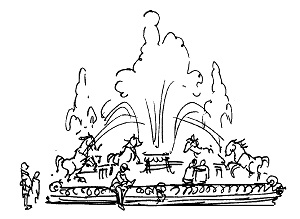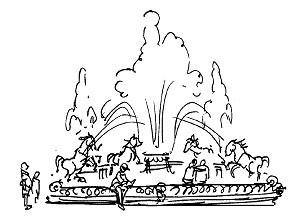

“Do you want to be well? (John 5:6).
Today’s two readings are linked by the theme of water. The prophet Ezekiel witnesses water flowing from the four sides of the temple as the source of life, and Jesus heals the cripple waiting by the Sheep gate near the temple. Without going overboard on interpretation, it is fruitful to see themes and images taken up by the fourth evangelist to show how Jesus fulfills the prophets.
Jesus is the source of living waters that heal and sustain us. Baptism is our point of entry into the mystery of his life among us. We depart slavery and emerge into the promised land by passing through the waters of the Red Sea and the Jordan River. The cripple at the gate has been sick for 38 years, a possible reference to the time the Hebrews spent during the great desert crossing after liberation from Egypt.
The actual total is 40 years, so he is, in fact, almost there when Jesus tells him to pick up his mat and walk.
The image of “troubled waters” in the story was taken up in the liberation songs of American slaves escaping north, when to elude the tracking dogs, they entered the waters to cross over into freedom. “Troubled waters” is also seen as difficulty to be bridged to find relief. Jesus first addresses the crippled man by asking him if he wants to be healed. It seems a strange question, yet it emphasizes the need for faith to escape the hopelessness many sick people experience. Jesus warns the man not to slip back into despair, but to come forward into freedom. We must want this new freedom.
The power of God’s Word is often in imagery and not just ideas. The willingness to enter the water is a sign of hope. The danger of troubled waters is also a challenge. Baptism is about dying to the past in order to emerge into a new, more hopeful future. Baptism is a ritual but also a real experience to do what is necessary to escape the forces that diminish our lives by locking us into the back currents of the past. Enter the deep, unknown water; go with the flow. After a night of failure, cast your nets into the water on the “other side of the boat” (John 21). So many images of conversion are about water.
Ezekiel is famous for his description of the rising of dry bones. God puts before us life and death and urges us to choose life, from the dryness of death to the wetness of rebirth and vitality. We leave behind the paralysis and doubts of the past to launch into the moist places of life, the waters of mystery and fruitfulness. For a desert people seeking life, these images captured and conveyed their approach to the living God.
Advertisement




